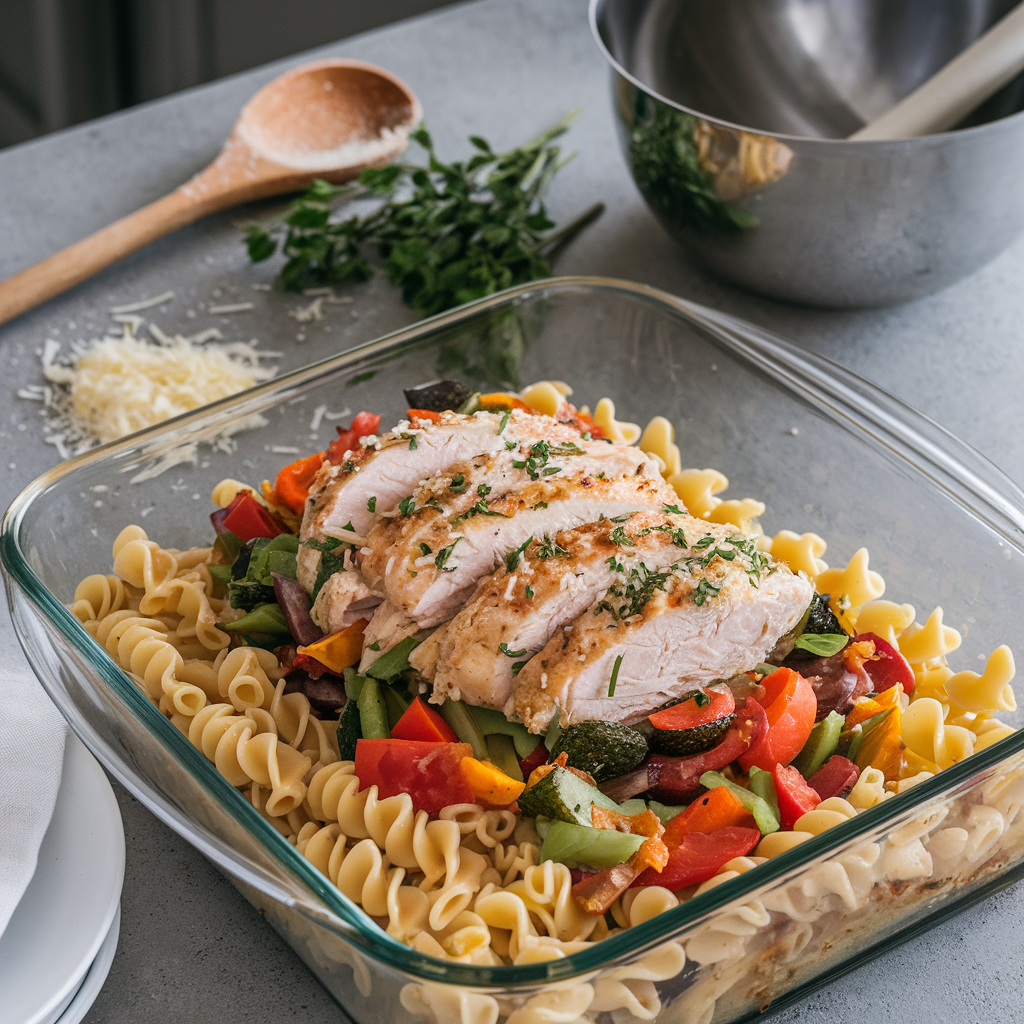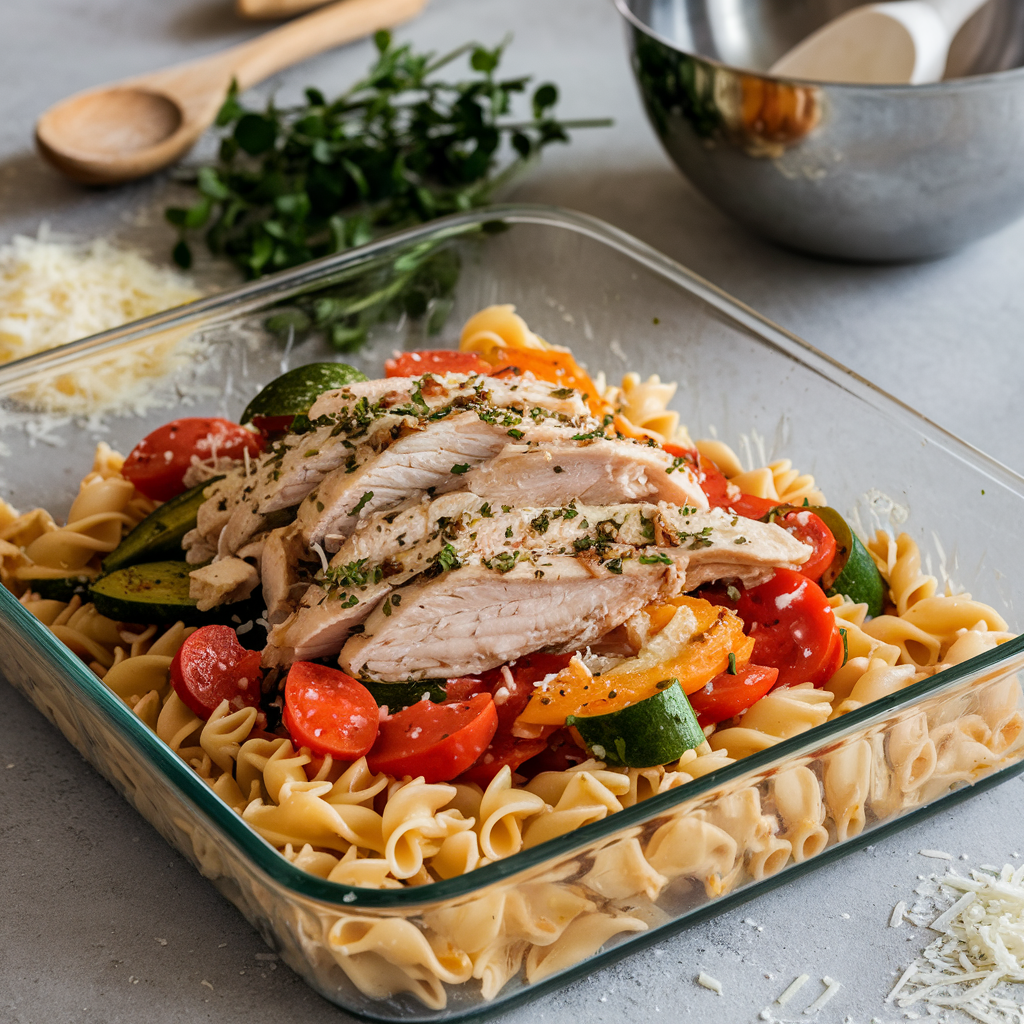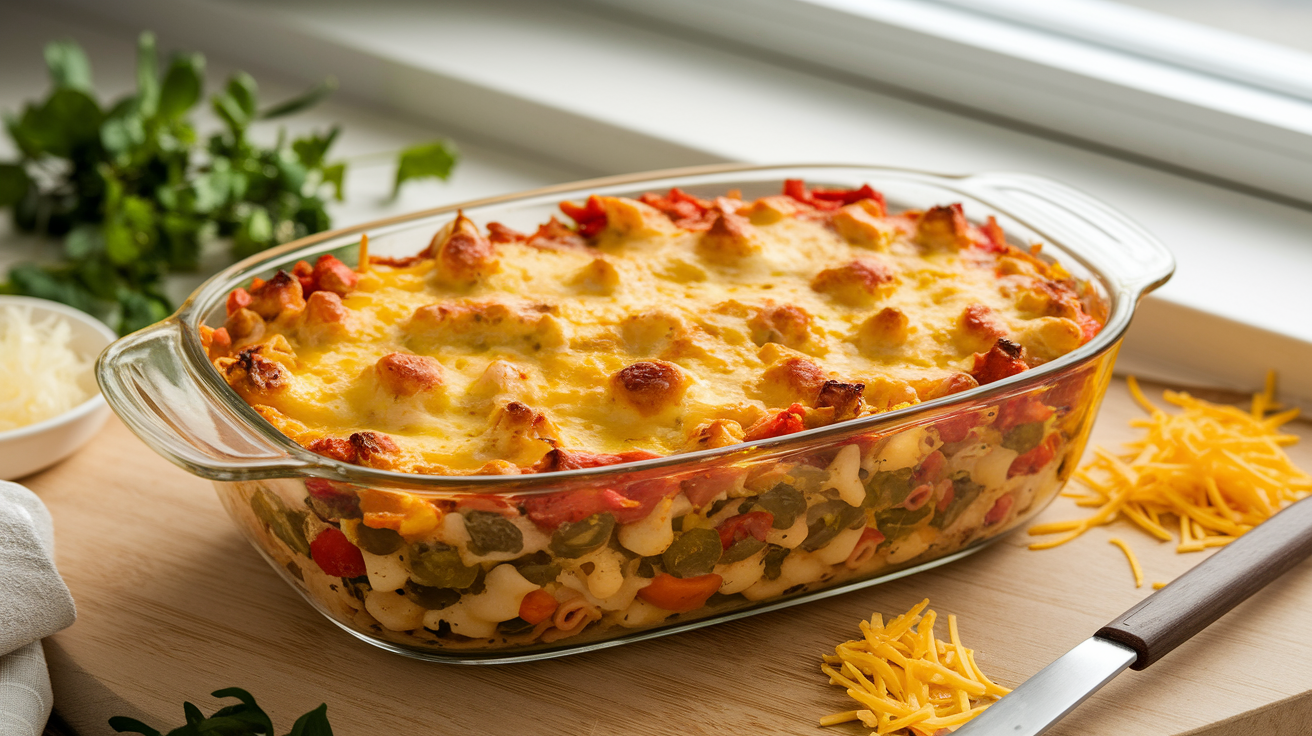Introduction to Casserole Recipes
Casserole recipes have been a staple in American kitchens for generations, and it’s no wonder why. These versatile, one-dish meals bring together a mix of flavors and textures, making them perfect for busy weeknights or festive gatherings. Whether you’re a seasoned cook or a beginner, casseroles are easy to prepare, and their customizable nature ensures that there’s something for everyone.
The beauty of a casserole lies in its simplicity. With just a few essential ingredients and minimal prep work, you can create a hearty meal that satisfies even the pickiest eaters. Plus, casseroles are an excellent way to use up leftover ingredients, reducing food waste. From creamy pasta bakes to healthy vegetable-based options, casseroles offer endless possibilities to suit any taste or dietary preference.
Casseroles are also a fantastic way to experiment with different cuisines. For instance, a fish taco casserole can bring the flavors of Mexican street food into your home with layers of tortillas, fish, cheese, and vibrant toppings. Keep reading to learn how to master casserole recipes, avoid common pitfalls, and explore creative variations. Trust us, your kitchen routine will never be the same!
Essential Ingredients for Casserole Recipes
To craft a delicious casserole, you’ll need a few key ingredients. While recipes can vary widely, most casseroles include these core components:
- A Base: This can be pasta, rice, potatoes, or even tortillas, which form the foundation of casserole recipes. The base provides structure and absorbs flavors.
- Protein: Chicken, beef, fish, tofu, or beans add substance and make the dish more filling.
- Vegetables: From frozen peas to fresh spinach, vegetables add color, texture, and nutrients.
- A Sauce: Cream-based sauces, tomato-based options, or even broth are common choices to tie everything together.
- Cheese or Toppings: A layer of cheese or breadcrumbs adds flavor and a satisfying crunch.
For a fish taco casserole, consider using flaky white fish like cod or tilapia, seasoned with spices like cumin and chili powder. Layer it with corn tortillas, black beans, and a creamy lime-infused sauce for a delightful twist on a classic.
Tip: Opt for fresh and high-quality ingredients to ensure the best results. Using seasonal vegetables can enhance the flavor and nutritional value of your casserole.
Tools Needed for Preparing Casseroles
You don’t need a fancy setup to prepare casseroles, but having the right tools on hand can make the process smoother. Here are the essentials:
- A Sturdy Casserole Dish: Look for oven-safe dishes made from glass, ceramic, or cast iron. These materials distribute heat evenly and are easy to clean.
- Mixing Bowls: You’ll need these to combine ingredients before layering. Opt for bowls of varying sizes to suit different tasks.
- A Sharp Knife and Cutting Board: These are crucial for prepping vegetables and proteins. A well-maintained knife will save you time and effort.
- Measuring Cups and Spoons: Accurate measurements ensure your casserole is perfectly balanced.
- A Spatula or Large Spoon: For spreading layers evenly and ensuring every last bit of sauce gets used.
Additionally, tools like a grater for cheese, a whisk for blending sauces, and a colander for draining pasta can be helpful. Investing in durable, high-quality tools will save you time and frustration in the kitchen.

Step-by-Step Guide to Making a Classic Casserole
Mastering a classic casserole is easier than you think. Follow this simple guide to create a dish that’s both comforting and delicious.
Preparing the Base Layer
- Choose Your Base: Select a starch like pasta, rice, or tortillas. For a twist, consider using corn tortillas if you’re making a fish taco casserole.
- Cook the Base: Pre-cook pasta or rice to ensure it’s fully cooked. For potatoes, thinly slice them to ensure even cooking. This step is crucial to avoid a mushy or undercooked base.
- Layer in the Dish: Spread the base evenly across the bottom of your casserole dish. This provides a sturdy foundation for the rest of your ingredients.
Adding the Protein and Vegetables
- Pick Your Protein: Shredded chicken, ground beef, or fish are great options. If you’re opting for a vegetarian dish, beans or tofu work well. For a fish taco casserole, use seasoned fish like tilapia or mahi-mahi.
- Prepare the Vegetables: Chop fresh vegetables or thaw frozen ones. Consider bell peppers, zucchini, or onions for added flavor. Sautéing vegetables beforehand can enhance their taste.
- Combine: Mix the protein and vegetables in a bowl with your chosen sauce. Adding spices like cumin, paprika, or garlic powder can elevate the dish.
- Layer: Spread this mixture over the base layer. Be sure to distribute it evenly for consistent cooking.
Topping Your Casserole for Extra Flavor
- Choose a Topping: Options include shredded cheese, breadcrumbs, or crushed tortilla chips. For a fish taco casserole, consider using a blend of cheddar and Monterey Jack cheese.
- Add Herbs and Spices: Sprinkle with parsley, paprika, or a touch of cayenne for extra flavor. Fresh cilantro can be a great addition to a Mexican-inspired casserole.
- Bake: Place your casserole in a preheated oven and cook until the top is golden and bubbling. Baking times typically range from 25 to 45 minutes, depending on the recipe.
Popular Types of Casserole Recipes
There’s no shortage of easy casserole recipes to try. Here are some favorites:
- Classic Chicken and Rice Casserole: A comfort food staple that combines tender chicken, creamy sauce, and perfectly cooked rice.
- Vegetarian Lasagna Casserole: Packed with layers of pasta, vegetables, and cheese, this dish is a hit with vegetarians and meat-eaters alike.
- Breakfast Casserole: Featuring eggs, sausage, and potatoes, this casserole is perfect for feeding a crowd at brunch.
- Fish Taco Casserole: A fun, flavorful option with layers of tortillas, seasoned fish, black beans, and a zesty lime sauce.
- Shepherd’s Pie: Ground meat and vegetables topped with creamy mashed potatoes make this a hearty choice for dinner.
Each of these recipes offers unique flavors, so you’re sure to find one that fits your mood and occasion. For a creative twist, try combining elements from different recipes to make your signature casserole.
Healthy Alternatives for Casserole Recipes
Casseroles don’t have to be calorie-heavy to be delicious. Here are some healthier options:
- Swap Heavy Cream for Greek Yogurt: This reduces fat while maintaining creaminess. It’s especially effective in dishes like chicken casseroles.
- Use Whole-Grain Bases: Opt for whole-grain pasta or brown rice instead of refined versions. These add more fiber and nutrients.
- Add Extra Vegetables: Incorporate zucchini noodles, cauliflower rice, or spinach to increase the nutritional value.
- Go Easy on Cheese: Use just enough for flavor and consider low-fat options. Nutritional yeast can be a great alternative for a cheesy flavor.
- Lean Proteins: Choose skinless chicken, fish, or beans for a lighter meal.
Making a fish taco casserole? Use baked fish and load up on vegetables like peppers, onions, and corn for a lighter version that doesn’t skimp on taste. You can also reduce the number of tortillas and focus on the filling for a lower-carb option.
Common Mistakes to Avoid When Making Casseroles
Even seasoned cooks can make mistakes when preparing casseroles. Avoid these common pitfalls:
- Skipping the Pre-Cooking Step: Always pre-cook ingredients like pasta or potatoes to avoid undercooking. This is especially important for dense vegetables like carrots.
- Overloading the Dish: Too many layers can lead to uneven cooking. Stick to a balance of layers for even results.
- Not Seasoning Enough: Each layer should be properly seasoned for a balanced flavor. Undersalted dishes can taste bland even with quality ingredients.
- Ignoring Liquid Ratios: Too much sauce can make your casserole soggy, while too little can leave it dry. Aim for a moist but not watery consistency.
- Rushing the Baking Time: Allow enough time for the casserole to cook thoroughly. Underbaking can result in uneven textures and flavors.
By steering clear of these errors, you’ll ensure a perfectly cooked casserole every time. Taking a few extra minutes to plan and prep can make all the difference.
Make-Ahead Casserole Recipes
One of the best things about casserole recipes is how easy they are to prepare ahead of time.
Here’s how to do it:
- Prep and Assemble: Follow the recipe up to the baking step, then cover and refrigerate for up to 24 hours. This is ideal for busy weekdays or when hosting guests.
- Freeze for Later: Many casseroles freeze well. Use airtight containers and label them with the date. Dishes like fish taco casseroles freeze particularly well.
- Reheat with Care: For frozen casseroles, thaw in the refrigerator overnight before reheating. Cover the dish with foil to prevent drying out during reheating.
Make-ahead casseroles, like a fish taco casserole, are perfect for busy weeks or when you’re hosting guests. They allow you to spend less time in the kitchen and more time enjoying your meal.
Pairing Casseroles with Side Dishes and Drinks
Casseroles are hearty, but pairing them with the right sides and drinks elevates the meal. Here are some ideas:
- Fresh Salads: A crisp green salad balances the richness of a casserole. For example, a lime-cilantro slaw pairs wonderfully with a fish taco casserole.
- Bread or Rolls: Garlic bread or cornbread pairs well with most casseroles, adding a satisfying texture.
- Light Drinks: Consider iced tea, lemonade, or a glass of white wine. For Mexican-inspired casseroles, a margarita can be a fun choice.
- Seasonal Vegetables: Roasted asparagus, green beans, or steamed broccoli complement heavier dishes.
With the right pairings, your casserole meal will feel complete and satisfying. Don’t be afraid to get creative with your side dishes and drinks.

Casserole FAQs: Everything You Need to Know
Curious about casseroles? Below, we tackle some of the most frequently asked questions, providing detailed answers while keeping everything simple and clear. Dive in to learn more about casserole components, history, and the tools of the trade.
What Are the 5 Components of a Casserole?
Every great casserole is built around five key components. These elements work together to create the perfect balance of flavors, textures, and satisfaction. Let’s break them down:
- The Base Layer:
The foundation of any casserole is its base, typically made from starchy ingredients like pasta, rice, potatoes, or tortillas. This layer adds structure and helps soak up the flavors of the sauce. - Protein:
Proteins provide substance and make casserole filling. Popular options include chicken, ground beef, seafood, beans, or plant-based alternatives like tofu. For a unique twist, consider adding fish taco-inspired flavors with flaky white fish. - Vegetables:
Vegetables not only enhance the casserole’s nutritional value but also bring vibrant colors and textures. Common choices include broccoli, spinach, mushrooms, and zucchini. - Sauce:
The sauce ties all the ingredients together, ensuring the dish is moist and flavorful. Cream-based, tomato-based, or broth-based sauces are common, and you can even experiment with dairy-free options like cashew cream. - Toppings:
A casserole isn’t complete without a topping! Shredded cheese, breadcrumbs, or crushed tortilla chips add texture and visual appeal. Herbs like parsley or thyme also enhance the dish’s aroma and presentation.
By focusing on these five components, you can create a casserole that’s not only delicious but also versatile and crowd-pleasing.
Why Is It Called John Wayne Casserole?
The John Wayne casserole has a fascinating history tied to the iconic actor himself. Here’s the scoop:
- The Origin:
This dish gets its name from John Wayne, the legendary actor known for his roles in Western films. According to food lore, the recipe appeared in a cookbook that compiled celebrity-contributed recipes. Wayne himself reportedly provided the recipe, making it a Hollywood favorite. - Ingredients and Layers:
True to its hearty roots, the John Wayne casserole is made with ingredients like ground beef, biscuit dough, onions, tomatoes, and a mix of cheeses. The combination creates a savory, layered dish that’s both filling and flavorful. - Why It Stands Out:
This casserole is beloved for its hearty and satisfying nature. It’s often described as a cross between a taco-inspired bake and a savory pie, making it a hit at family dinners and potlucks.
Whether you’re a fan of Westerns or just love a good casserole, the John Wayne casserole offers a taste of history and a plate full of flavor.
What Is Jackie Kennedy Casserole?
The Jackie Kennedy casserole is as elegant and timeless as its namesake. This dish reflects the former First Lady’s refined taste and penchant for simple yet sophisticated meals.
- The Inspiration:
During her time in the White House, Jackie Kennedy was known for her love of French cuisine. However, this casserole showcases a more practical side of her culinary preferences—one that aligns with the needs of a busy household. - Key Ingredients:
The dish often includes chicken or turkey, combined with creamy mushroom sauce, rice or noodles, and a touch of sherry for flavor. It’s finished with a delicate breadcrumb or cheese topping. - Why It’s Memorable:
The Jackie Kennedy casserole is celebrated for its blend of classic American comfort food with subtle gourmet touches. It’s an excellent option for those seeking a sophisticated yet approachable dish.
Whether served at a formal dinner or a casual gathering, this casserole exudes class and simplicity.
What Is the Best Casserole Dish to Use?
The dish you choose can make a big difference in your casserole’s success. Here’s what to look for in the perfect casserole dish:
- Material:
- Ceramic or Glass: These are ideal for even heat distribution, ensuring your casserole cooks uniformly. Glass dishes also let you see the layers as they bake, which is great for presentation.
- Cast Iron: Enameled cast iron dishes retain heat exceptionally well and are perfect for transitioning from oven to table.
- Size and Shape:
- Most casseroles require a dish that’s 9×13 inches, which is the standard size for recipes serving 4–6 people.
- For smaller portions, an 8×8-inch dish works perfectly.
- Features:
- Look for casserole dishes with lids. They’re great for storing leftovers and keeping the dish moist while baking.
- Non-stick coatings can also be helpful for easy cleanup.
- Durability:
Invest in a dish that can handle high oven temperatures and is resistant to chips or cracks. Quality dishes will last for years and become a staple in your kitchen.
With the right casserole dish, you’ll have a reliable tool that helps you create meals your family and friends will love.
Conclusion: Why Casserole Recipes Are a Must-Try
Casserole recipes offer a unique combination of convenience, flavor, and versatility. They’re easy to prepare, adaptable to different tastes, and perfect for any occasion. Whether you’re craving a comforting classic or something fresh like a fish taco casserole, there’s a recipe out there for you.
By following the tips and techniques outlined here, you can confidently create casseroles that your family and friends will love. So grab your casserole dish, gather your ingredients, and start cooking! You might just discover your new favorite recipe.

1 réflexion au sujet de « Casserole Recipes: Tips, Tools, and Popular Variations »